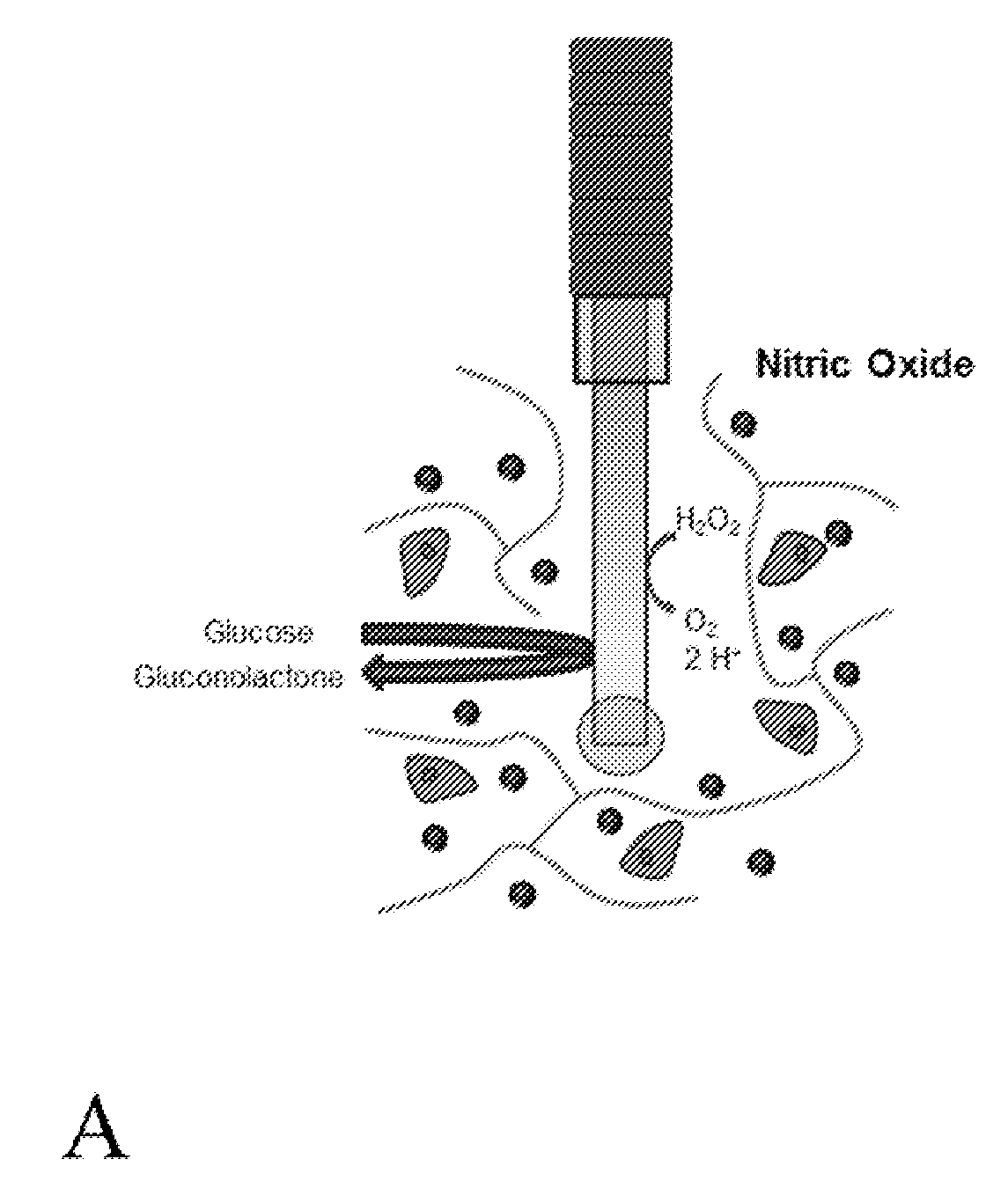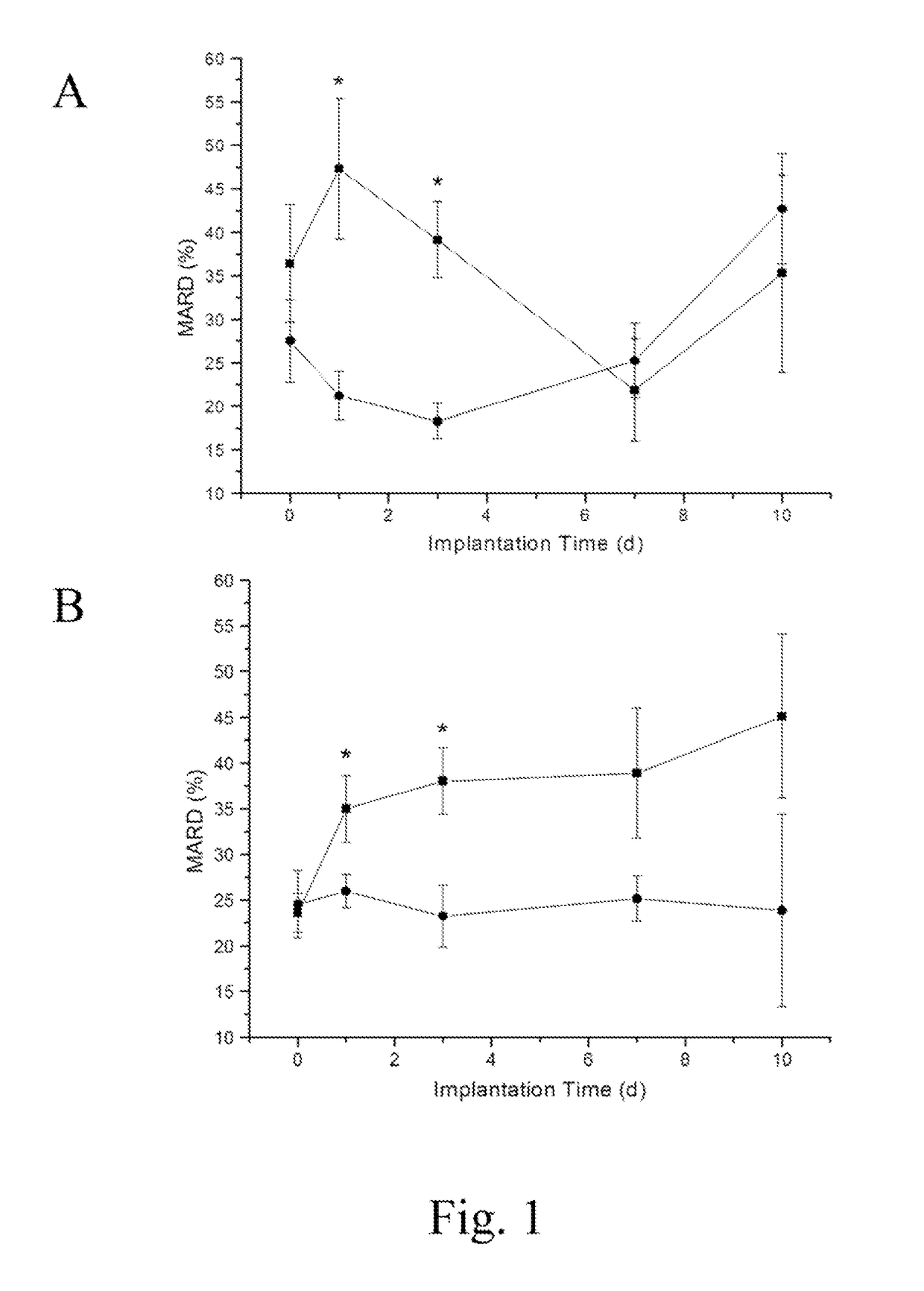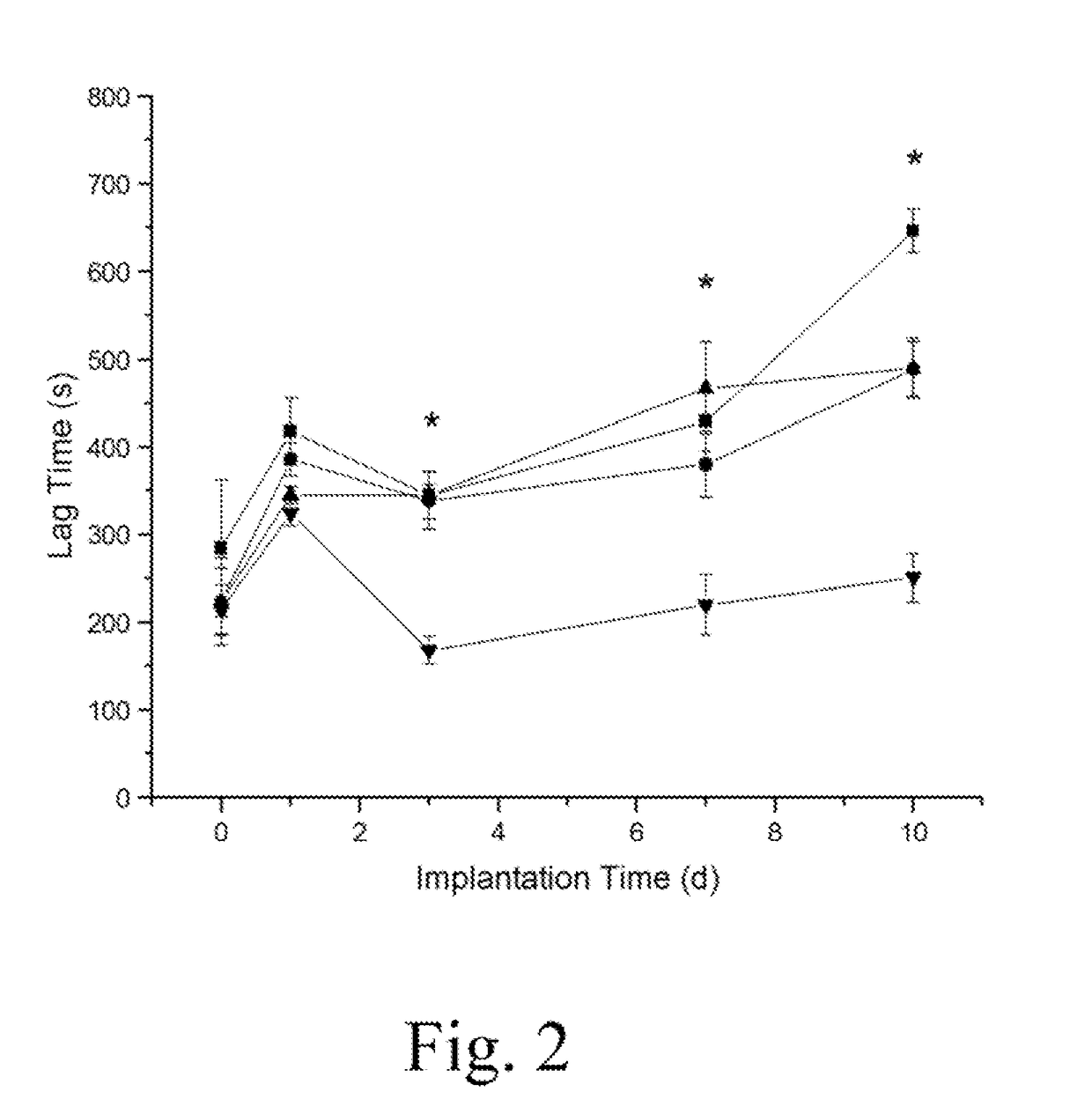Extended analytical performance of continuous glucose monitoring devices via nitric oxide
a monitoring device and nitric oxide technology, applied in the field of extended analytical performance of continuous glucose monitoring devices via nitric oxide, can solve the problems of inability to perform in vivo amperometric glucose biosensors for 1 week, limited utility of in vivo amperometric glucose biosensors, and high blood pressure, so as to reduce the foreign body response
- Summary
- Abstract
- Description
- Claims
- Application Information
AI Technical Summary
Benefits of technology
Problems solved by technology
Method used
Image
Examples
Embodiment Construction
[0024]The present invention relates to instruments and methods for in vivo analysis and the associated performance of percutaneously implanted nitric oxide (NO)-releasing amperometric glucose biosensors.
[0025]In an embodiment, the present invention relates to nitric oxide releasing glucose concentration determining biosensors that are improved relative to the biosensors that are presently available. In some embodiments the biosensors of the present invention are improved over those currently available because they are able to release nitric oxide at levels that are above those currently available. Alternatively and / or additionally, the biosensors of the present invention are improved over the biosensors that are available because the nitric oxide is released over a longer duration of time. In both instances, these improvements lead to one being able to make more precise and / or more accurate measurements, leads to greater sensitivity, allows the biosensor to detect concentrations of ...
PUM
 Login to View More
Login to View More Abstract
Description
Claims
Application Information
 Login to View More
Login to View More - R&D
- Intellectual Property
- Life Sciences
- Materials
- Tech Scout
- Unparalleled Data Quality
- Higher Quality Content
- 60% Fewer Hallucinations
Browse by: Latest US Patents, China's latest patents, Technical Efficacy Thesaurus, Application Domain, Technology Topic, Popular Technical Reports.
© 2025 PatSnap. All rights reserved.Legal|Privacy policy|Modern Slavery Act Transparency Statement|Sitemap|About US| Contact US: help@patsnap.com



